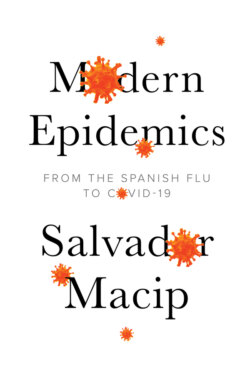Читать книгу Modern Epidemics - Salvador Macip - Страница 26
The invisible hand behind things
ОглавлениеThe fact is that microorganisms have played an extremely important role at crucial moments in the history of humanity. And vice versa. The fact that we’ve been evolving and constructing complex social networks has enabled infections to spread much more efficiently to reach every continent, which they might never have achieved without us. This parallel progress of humans and microbes began when our ancestors left their nomadic life and started living in settlements where they set about cultivating the land. As towns and cities grew bigger, more people lived in close proximity, sanitary conditions worsened and diseases spread more easily. Outside organisms, the chances of survival of microbes causing tuberculosis or leprosy, for example, are very slight, and they could therefore only start spreading contagion in any significant way when human beings started to live crammed together. Prior to this, it was difficult for these microbes to jump between small groups of people who lived in isolation from each other, which is why they never caused epidemics.
When they made the transition from hunters to farmers, humans also came to share their living space with domesticated animals. It is believed that this made it easier for many microbes to jump from one species to another. For example, diseases as widespread as smallpox, mumps, diphtheria, measles and whooping cough are caused by microorganisms that, in all likelihood, originally came from animals. In the coming chapters, we will see that this is also true for the more recent pandemics.
We have no record of any epidemic until the classical Greco-Roman period when there were three known major plagues. The plague of Athens (of 430 BCE, the oldest epidemic on record) broke out after the inhabitants of nearby towns fled to the city to seek protection from the Spartan advance. The terrible conditions of hygiene in overcrowded Athens allowed the epidemic, perhaps smallpox, to spread unchecked. A quarter of the population died of the plague, eventually giving victory to Sparta in that war, which is why it’s said that, in some sense, a microbe hastened the end of the golden age of Greek culture.
The second major epidemic of the period is that known as the Antonine plague, which hit the Roman Empire in 166 CE. It probably originated in Seleucia (about 30 kilometres southeast of modern Baghdad) and is also thought to have been smallpox. It marked the beginning of the decline of Rome, which was completed with the third great disaster, the Justinian plague, in Constantinople in 542 CE. Apparently caused by the bacterium Yersinia pestis, it lasted for a year, followed by two whole centuries of new outbreaks, and it is thought to have killed a total of 100 million people.
A few centuries later, during the Crusades, the Christian attacks often failed owing to epidemics of dysentery, typhoid fever or smallpox, diseases the crusaders brought back from foreign lands to their countries of origin in Europe. The opening up of trade routes between Asia and Europe, thanks to the efforts of Marco Polo in the thirteenth century, also made it easier than ever before for microbes to travel between continents. Indeed, most infectious diseases had spread everywhere by the Middle Ages.
It’s all too well known that infections played a key role in the Europeans’ victory over the indigenous peoples of the Americas in the fifteenth and sixteenth centuries. People in the New World had never suffered from many diseases like smallpox or measles which were common in Europe. It’s believed that the reason why these infections didn’t exist in the Americas is that, there, human beings had few domesticated animals, which, as I’ve said, were the origin of many of the European epidemics. In the Americas, people coexisted mainly with ducks, llamas and alpacas, which are not major microbe reservoirs. So, these indigenous peoples had no immunity whatsoever against any of the new pathogens brought in by the invaders, and they began to die in huge numbers as soon as contacts were made. However, the exchange wasn’t wholly unidirectional. It’s believed that the conquistadors took home to Europe other diseases like syphilis and typhus.
